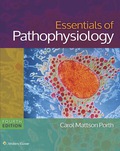
A.
To determine: The definition of hunger and appetite and their relation with regulating food intake.
Introduction: The analysis of behavioral patterns is done by taking into account all the factors that influence the attitude and behavioral outcome of an individual or a group. This helps to predict how the behavior and response of the person will change according to the situations and the events taking place in various aspects of the animal’s life.
A.
Explanation of Solution
Hunger is the sensation that represents the physiological need to eat food for the body. Stomach rumbling is a sign that the body requires food and lack of food on time can lead to lightheadedness, weakness, fatigue, shakes, or irritability. Whereas appetite is the desire to eat. It can be triggered by hunger but mainly is due to cravings, habits, availability of food, boredom, and emotional factors.
Smelling or sight of food can stimulate the desire to eat food which is appetite. Hunger is beneficial for the body as it provides cues to the requirement for the body to refuel itself and provide energy to the vital organs for functioning and preventing the body to regulate its physiological processes. Contrastingly, appetite, when stimulated by hunger, fulfills the body’s need for food. Generally it is not a cue for the body’s need but the sensation that is produced by the brain after seeing or smelling the food and so it does not serve as an essential response from the body to regulate physiological processes.
B.
To determine: The difference between short term ad long term food intake and their neural and hormonal mechanisms of regulation.
Introduction: The analysis of behavioral patterns is done by taking into account all the factors that influence the attitude and behavioral outcome of an individual or a group. This helps to predict how the behavior and response of the person will change according to the situations and the events taking place in various aspects of the animal’s life.
B.
Explanation of Solution
| Characteristics | Long-term food intake | Short term food intake |
| Regulation | It enables maintenance of normal quantities of energy stores in the body. | It prevents overeating at each meal. |
| Hormones involved | Insulin and leptin are two most important long-term regulators of food intake and energy balance. | Cholescystokinin appears to set sensitivity to satiety producing short term effects. |
| Gastrointestinal regulation | Pancreatic hormone insulin regulates blood glucose that regulates long term body weight. | Gastric hormones ghrelin stimulates hunger signal. |
Want to see more full solutions like this?
Chapter 10 Solutions
EBK ESSENTIALS OF PATHOPHYSIOLOGY
 Human Anatomy & Physiology (11th Edition)BiologyISBN:9780134580999Author:Elaine N. Marieb, Katja N. HoehnPublisher:PEARSON
Human Anatomy & Physiology (11th Edition)BiologyISBN:9780134580999Author:Elaine N. Marieb, Katja N. HoehnPublisher:PEARSON Biology 2eBiologyISBN:9781947172517Author:Matthew Douglas, Jung Choi, Mary Ann ClarkPublisher:OpenStax
Biology 2eBiologyISBN:9781947172517Author:Matthew Douglas, Jung Choi, Mary Ann ClarkPublisher:OpenStax Anatomy & PhysiologyBiologyISBN:9781259398629Author:McKinley, Michael P., O'loughlin, Valerie Dean, Bidle, Theresa StouterPublisher:Mcgraw Hill Education,
Anatomy & PhysiologyBiologyISBN:9781259398629Author:McKinley, Michael P., O'loughlin, Valerie Dean, Bidle, Theresa StouterPublisher:Mcgraw Hill Education, Molecular Biology of the Cell (Sixth Edition)BiologyISBN:9780815344322Author:Bruce Alberts, Alexander D. Johnson, Julian Lewis, David Morgan, Martin Raff, Keith Roberts, Peter WalterPublisher:W. W. Norton & Company
Molecular Biology of the Cell (Sixth Edition)BiologyISBN:9780815344322Author:Bruce Alberts, Alexander D. Johnson, Julian Lewis, David Morgan, Martin Raff, Keith Roberts, Peter WalterPublisher:W. W. Norton & Company Laboratory Manual For Human Anatomy & PhysiologyBiologyISBN:9781260159363Author:Martin, Terry R., Prentice-craver, CynthiaPublisher:McGraw-Hill Publishing Co.
Laboratory Manual For Human Anatomy & PhysiologyBiologyISBN:9781260159363Author:Martin, Terry R., Prentice-craver, CynthiaPublisher:McGraw-Hill Publishing Co. Inquiry Into Life (16th Edition)BiologyISBN:9781260231700Author:Sylvia S. Mader, Michael WindelspechtPublisher:McGraw Hill Education
Inquiry Into Life (16th Edition)BiologyISBN:9781260231700Author:Sylvia S. Mader, Michael WindelspechtPublisher:McGraw Hill Education





